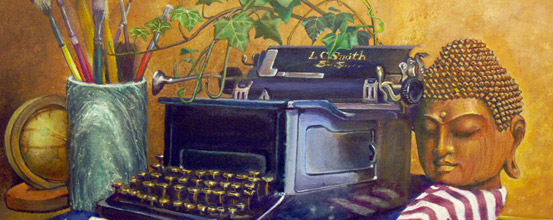The Shins at Wellmont

May 17, 2009
Montclair, NJ
By Doktor John
These Portland-based indie rockers packed Montclair’s refurbished former movie palace, The Wellmont practically up to the last rows of the nose-bleed section during this metro-area stop on their current tour. The Wellmont has been resurrected as a classic venue for this kind of second-tier musical performance group in the past year, having lay in a dormant state of disuse for some time following its closure as a movie theater years ago. It’s nice and all that, but I can’t say that it really works.
When in the past there were motion pictures projected on an elevated screen, they were perhaps visible to the mezzanine and balcony patrons, but the slant of the stadium-style seating is such that the performers on stage are just below the horizon of bobbing heads seated in front of the viewer. If one of these buffoons in front decides to stand and gyrate or even to sit leaning forward for the duration, the entire section behind the inconsiderate boor is blocked from seeing the show.
Opening was a sincere but generic Southern rock band with a kind of Louisiana/Celtic flavor named Delta Spirit. They were well received, perhaps in part because of the unexpected appeal of the garbage can lid-banging and mega-decibel bass drum pounding.
The Shins put on 2 full hours of their music unique for its strange, eccentric melodies, syncopated rhythms and above all for frontman James Russell Mercer’s piercing tenor. Reminiscent of the plaintive, happy-yet-sad vocal style of Robert Smith of the Cure, Mercer has the ability to make every lyric tug at the emotions of the listener, and to imbue each song with a level of profundity unmatched in the alternative music scene. Popular pieces from the second album predominated along with such favorites off “Wincing the Night Away†as “Sea Legs,†“Phantom Limb†and “Australia.â€
A cover of The Beach Boys was okay, but a melody-less number by The Mumps clashed with the Shins’ style, and it was a major miscalculation include it in the encore set where it produced an anti-climactic let-down.
Their performance style is far heavier and harder rock than ever is heard on their recordings, and it’s not all that pleasing for Mercer to strain and waste his exquisite voice with yelling or for the accompanists to grunge it up like Smashing Pumpkins. The mellow, folksy sound of the Shins was disappointingly tossed aside during overly enthusiastic, noisy, speeded-up versions of their favorites. The material itself is unquestionably great, original and among the best alternative rock around, but it didn’t always get the reverential treatment it deserved.











